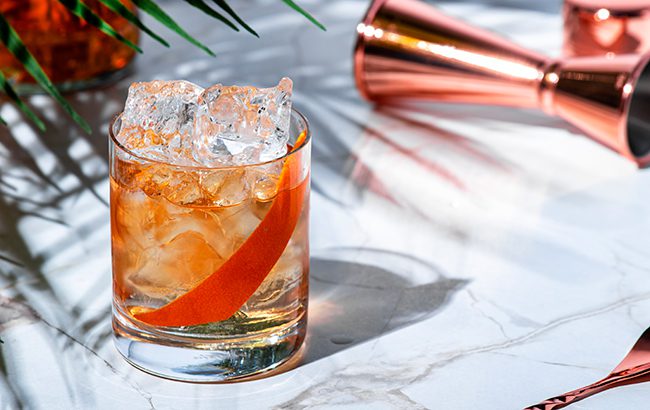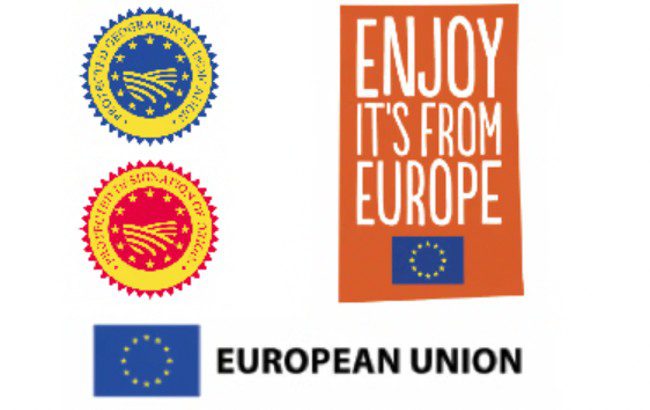EU spirits: the taste of Scandinavia
By SB editorialScandinavian spirits are often considered a specialist, niche subcategory. But these deeply traditional drinks offer a spectrum of flavour, as Kristiane Westray, ambassador to the EU’s ‘More Than Only Food & Drink’ campaign, attests.

From rich distilling traditions to sustainability-minded production and authenticity assurances, spirits made in the European Union (EU) are rightly celebrated for their quality, creativity and cultural resonance. This rings true across Scandinavia, where drinks made according to renowned Protected Geographical Indication (PGI) and Protected Designation of Origin (PDO) marks are making waves beyond the region.
While the conventional geographic definition of Scandinavia spans Sweden, Denmark, and Norway, for the purposes of this spirited exploration we’re including Finland and Estonia, too. With that in mind, these are the region’s spirits to know today – whether you’re building a cocktail menu or looking for refreshing additions to your on-shelf assortment.
Similar to gin, aquavit – or akvavit, depending on the local language – is simply a neutral spirit re-distilled with botanicals. But what sets it apart is the requirement, in law, for the spirit to be ‘largely attributable’ to caraway and/or dill seeds. Aquavit is the pinnacle of savoury spirits, a must-taste.
Other botanicals used in aquavit include fennel, coriander and aniseed – anything that complements its earthy, citrussy, slightly vegetal character. The Swedish Aquavit PGI, and aquavits made in Denmark, are typically made from grains, and are unaged, adding to the differentiation.
Scandinavian makers have long traditions of crafting vodka. In fact, there’s evidence of Swedes producing the spirit as far back as the 14th century. Estonia, with its close links to Finland, is also prized for its vodka. Today, PGIs protect and celebrate the category in Finland (Vodka of Finland PGI), Sweden (Swedish Vodka PGI), and Estonia (Estonian Vodka PGI).
So, how do they differ? Vodka of Finland PGI draws on local grains such as barley, oats and rye, and the country’s famously pure groundwater, giving a clean, smooth spirit. Swedish Vodka PGI is made exclusively from Swedish-grown grain, often winter wheat, prized for its crisp, precise flavour. Estonian Vodka PGI can be distilled from Estonian-grown cereals or potatoes, producing a characterful spirit with a subtly grain-forward edge.
All of these PGIs must be distilled to a minimum of 96% ABV before being watered down to bottling strength. This detail guarantees the quality of the vodka, while allowing for creative freedom so the distiller could use local water or raw materials to impart a sense of place.
There are two liqueur styles that are particularly evocative, expressing a deep heritage and rich sense of place. Suomalainen Marjalikööri PGI from Finland is a mouth-watering fruit liqueur made by macerating local berries in alcohol. Meanwhile, Swedish Punch PGI from Sweden is a smooth, rich, honey-like spirit made by blending arrack with syrup, citrus, and tea. Both serve as remarkable vehicles for flavour and storytelling thanks to their complexity and traditions.
The future of Scandi spirits
While the spirits outlined above draw on their histories as part of their unique positioning, EU PGIs are always evolving. The burgeoning Scandinavian whisky landscape is a vibrant example of this. Distillers in all four nations are working on proposals to develop their own GIs to celebrate and protect their own categories. Most recently, in April 2025 a collective of 10 makers in Denmark launched the Danish Whisky Manifesto. This clearly illustrates the innovation and creativity flowing through the EU spirits community.
For more information on the EU’s ‘More Than Only Food and Drink’ campaign, visit: https://enjoy-its-from-europe.campaign.europa.eu/united-kingdom/en.

Related news
Northern heights: Scandinavia's spirits success story
Riga as a strategic logistics hub for beverages across Europe, Scandinavia and Asia
Scandic Bar: elevating bartending with Scandinavian style and quality
